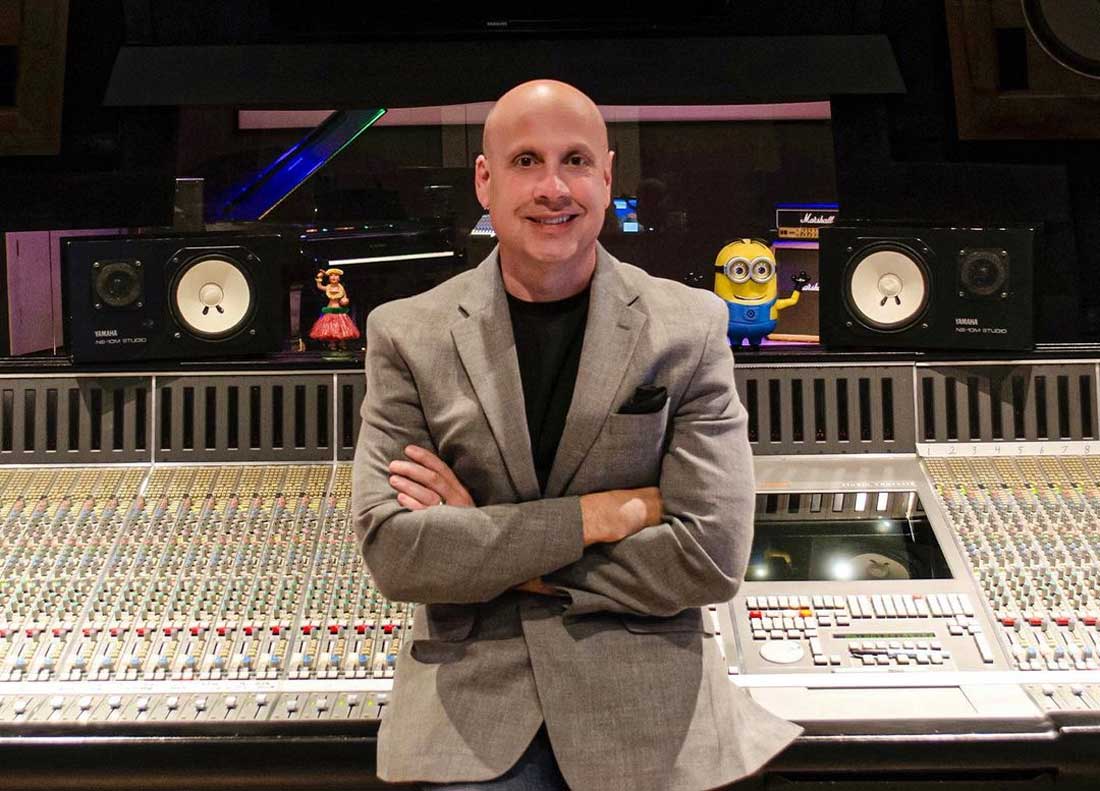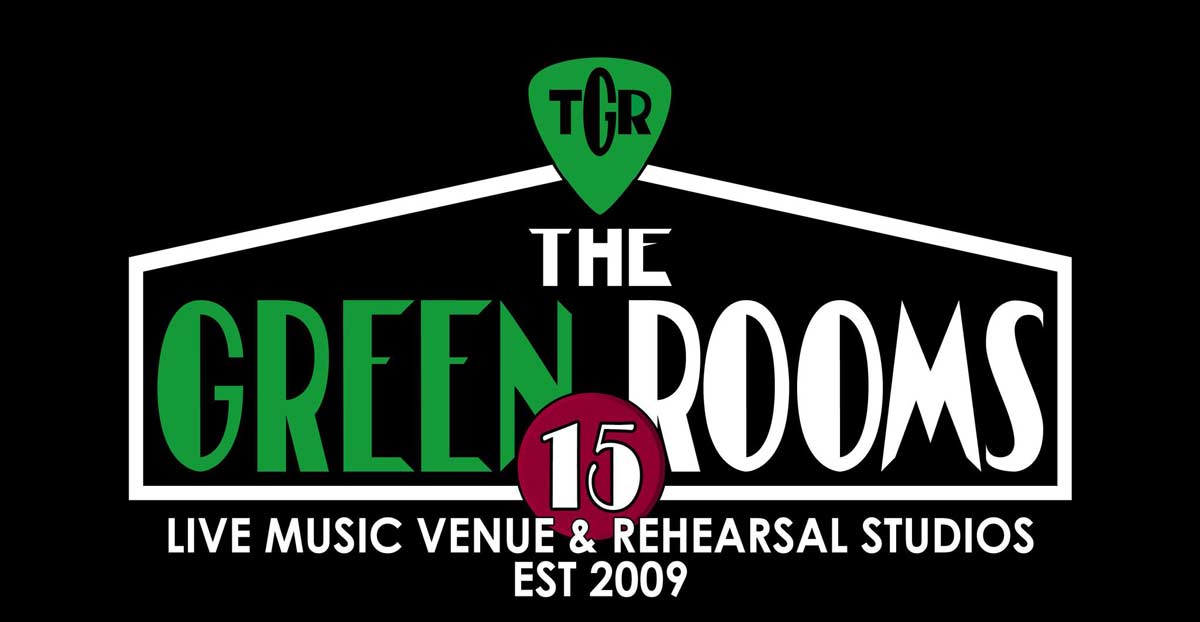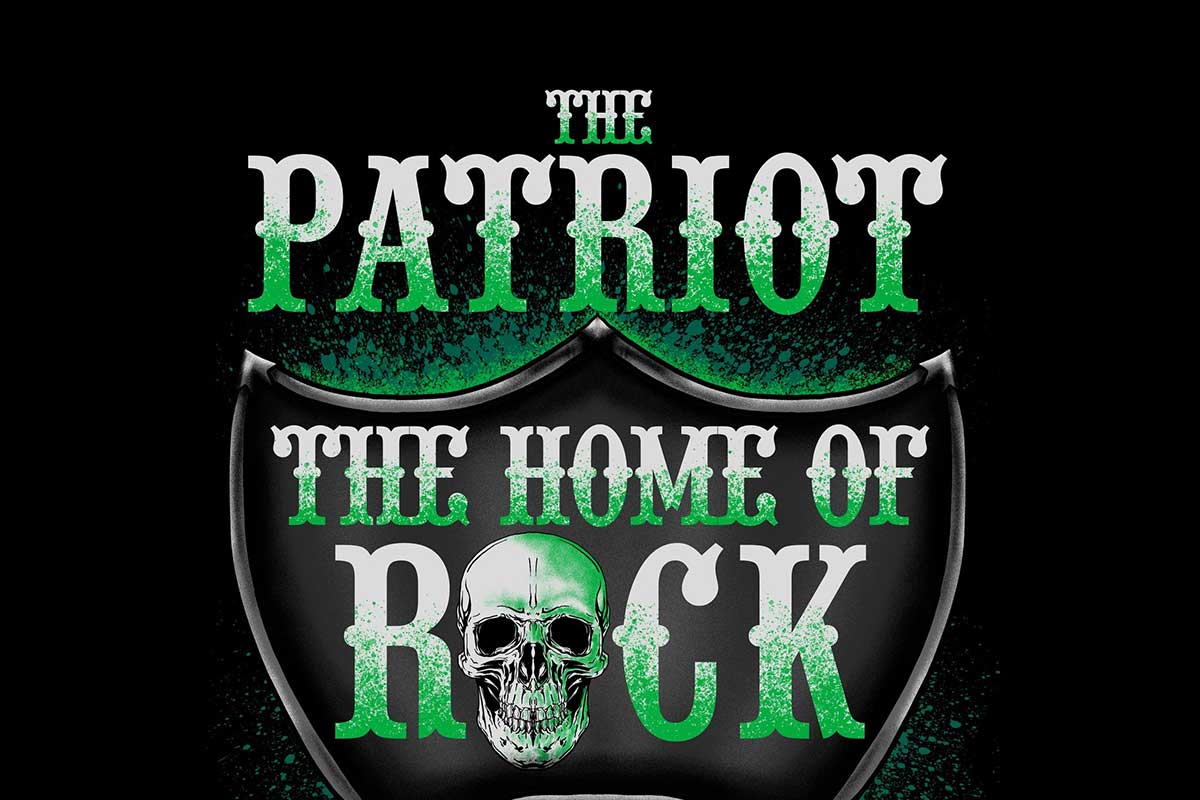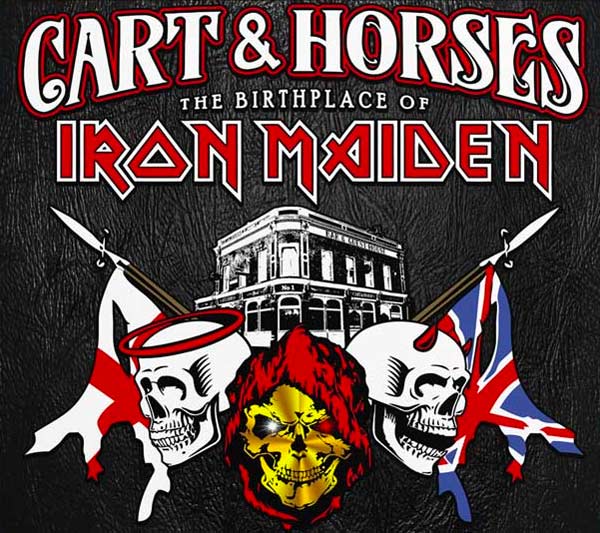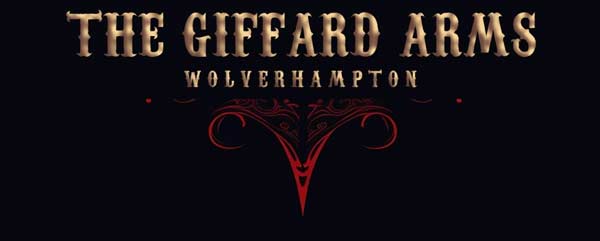Four time Grammy nominated and multiple award winning Kitt Wakeley is to release his latest album ‘Symphony of Sinners and Saints’ later this year, with the first track ‘Conflicted’, a collaboration with Joe Satriani, released today exclusively at MetalTalk.
Kitt told MetalTalk, that working with Satriani “makes it easier when it is someone of his calibre of talent” and how Joe let “the song breath, while adding perfection for guitars.”
The words ‘critically acclaimed’ do not always translate into genuine popularity with the public, often a signal for something that is knowingly arch and angular for most tastes. In the case of Kitt Wakeley though, this Grammy nominated, award-winning composer, musician and producer deserves every plaudit that has been raining down on his head since he first emerged.
With a history of working with some of the very top musicians in the world, his forthcoming new album ‘Symphony of Sinners and Saints’ is set to be his finest yet and this first single ‘Conflicted’, released exclusively at MetalTalk, sets the benchmark dizzyingly high.
An incredibly potent mix of Heavy Rock rhythms juxtaposed with a classical orchestra and choir, this is cinematic music at its most powerful and thrilling.
It opens with the otherworldy guitar of six string superstar Joe Satriani howling at the incoming storm of the orchestra, the pounding and metallic beats growing louder and more frantic as they charge before the might of the horns and strings that stand as a stronghold.
The choir add another delicious aural layer to the drama before Satriani skitters through the melee, his playing slashing and scything through everything. A moment of eerie calm descends, the eye of the storm, before the guitar solo ushers in a fight to the death.
This really has to be heard to be believed.
Immerse yourself in Kitt Wakeley’s incredible world but be aware, you may close your eyes at the first notes only to open your eyes at its conclusion to find yourself stood on a distant, battle scarred plain, a sword in your hand and an army all around you.

With the success of ‘Midnight in Macedonia’, Grammy nominations and winning a number of best albums, best producer, best songwriter, and many more awards, was 2019, early 2020, your best year so far?
Kitt Wakeley: “There is no doubt that 2019 and 2020 were a euphoric season for my music. It was an opportunity show the world my labor of love, creativity and emotional release of hours, weeks and months of hard work.
“Of course, artists write music for themselves and hope others like it, but to get the kind of validation for my work during 2019 and 2020 was overwhelmingly satisfying.”
The album ‘Symphony of Sinners and Saints’ is fantastic. Heavier than ‘Midnight in Macedonia’, I think. Did the fact that you were going to work with Joe Satriani shape the initial ideas for the piece.
“Joe’s insane guitar magic came later, during the writing the album. All my music is created based on my initial vision, which usually morphs over time.
“Once, I feel at peace with what I have written, I get more forensic on things like guitar, drums and bass. Most people would listen to the demos and think they were finished product. But, when I add a real orchestra, a talented guitar player, drummer and bass player, details become very important and the music has a lot more sizzle and credibility.
“I encourage everyone who plays on my projects to add their own thumbprint on my music. This gives more colour, depth and perspective.
“When you have someone like Joe Satriani participate on your project, that thumbprint is much more significant. The brilliance of his playing magnifies my music.
“To his credit, it became a Joe Satriani song.
“Quite honestly, the result was an obscenely good Joe Satriani song. I am not ego driven, so the humble thing to do is step aside for such creativity. I would like to think my music was his inspiration to his inventiveness. He s truly a brilliant mind and talent.”
Taking ‘Symphony of Sinners and Saints’ as a whole performance piece, the way it ebbs and flows and the ways the moods, emotions and tempo changes through the journey, there must be a lot to store in your head when you start to build something like this.
Can you talk about how your initial ideas to form the piece come together?
“Over time I hear seeds for potential songs. My iPhone is full of voice memos for song ideas. As I start to expand on those ideas, I usually begin with a chorus. If that inspires me, I work on the intro, which might be the most important part. I only have a few seconds to garner the listeners attention. From there, the music should flow and not be forced.
“Another purposeful thing that I do is to replicate a more traditional strong structure that you hear on the radio. The average listener does not always follow a classical or orchestral song structure. It is almost a subliminal thing, but I am trying to appeal to more than the orchestral fans.
“The final variable is giving the album purpose as an artist.
“The premise is an overall theme of Sinners and Saints, yin and yang, the constant conflict that we deal with every day. As you review the titles of the songs or listen to the music, those ideas become evident.
“The mere idea of a Rock band with an orchestra sets that tone. Within each song there is a struggle of fire and ice between orchestral parts. Every vibe of each song is in contrast with the others, which emulates the theme of the album.”
How do you go about writing the orchestration and the voices which layer over the top? Do you see this as a way of adding depth to an existing piece of music, or does it make up the foundations of the ideas behind the tracks?
“As said before, there are several components to consider. The intro is vital to getting the listeners attention. Another variable is to find a way to give the listener something different to hear every time they cue the song up.
“The first strategy is to have a call and response between instruments. The second is to come up with secondary melodies.
“The third is to add ear candy with things such as string arpeggiations and runs, transitions and drops. I like to introduce an element of the melody, add the supplemental parts and continue to build on those parts where they all stack nicely together.
“Next, I drop the demo into a video clip. Did it change the vibe visually?
“Finally, I add the guitar and drums to create a more commercial sound for the average listener.”

How was working with Joe Satriani on the album? Can you talk about you two becoming involved in the project?
“I get asked this question a lot. Quite frankly, it was a rather easy process. I sent an email with a background of the project and included a couple of demos, and he said yes!!
“He was extremely kind, generous with his time and very easy to work with.
“It makes it easier when it is someone of his calibre of talent.”
In the song Conflicted, can you talk about the direction you gave Joe, how you described to him the vision in your mind?
“When I sent him the tune, I was initially asking for him to play a solo and if he felt like replaying the rhythm parts, that was icing on the cake.
“He emailed me a week later and asked if he could get a little more creative, because he had some great ideas. I was anxious to hear his take on the song and inspiration that he was feeling.
“He did an incredible job of letting the orchestra come through and maintain its parts, letting the song breath, while adding perfection for guitars.
“The end result speaks for itself.”
Recording in Abbey Road must have been special? Does it have that magic aura and feel, given the legendary performances recorded there in the past?
“The legends that roamed the halls and various studios of Abbey Road, along with the masterpieces that were created, ooze from the mere vibe of the building. It is almost haunting.
“When you think of the Beatles and other major artists or the mega film scores that came to life in those studios, it is hard to comprehend that I have the privilege to make music there.
“What made it more special is the musicians, conductor, engineers and administrative staff that treated me as if I were just as important as all those legends.
“Abbey Road will be the only place that I will ever record my major projects.”
You have worked in Arena Rock, Power Pop, Electronic, and orchestral score settings before. Can you talk about your influences growing up? There must be a broad spectrum of styles.
“I am a complete musical schizophrenic when it comes to influences. I guess the question is, who didn’t influence me? I fell in love with the 80’s and 90’s pop, while geeking out on soundtracks from Superman, Rocky and Star Wars.
“Add the fact that I loved Hard Rock and it gets pretty crowded for influences.
“In short, I was a fan of anything that caught my attention. I could spend hours talking about how each artist or band has made an impact on my creativity.”

Can you explain how you will go about performing this piece live, once we are allowed to? Are we talking full blown events, with full Orchestra?
“Two shows are already lined up [Oklahoma City Civic Center and Carnegie Hall] and my crew is doing their research on more venues, with social distancing being a key factor.
“The first step is to create a stage set up that wows the audience when they first see it.
“Closely related to this are the other visuals. The producer and I agonise over every lighting aspect of the show, how it moves with the music and catches the impacts of phrases and drums. We spend the same amount of time on the background video.
“The goal is to get the audience involved by appealing to their visual and auditory senses.
“If we do it correctly, you will hear the audiences feedback as they feel euphoric and excited, while other parts of the show, literally bring the audience to tears.
“Finally, it is my job to connect with the audience. So, I have monologues throughout the show that tell stories. Some dramatic and some funny.
“Ultimately, I want to the entire show to appeal to every emotion of the audience member.”
Can you explain how the stories/monologues fit in with the music?
“I feel that the artist has to be genuine and transparent. Therefore, I keep this in mind when crafting material for the stories.
“I explain the premise of the song that was just played or that we are about to play. These can not be canned, generic stories.
“The goal is to make the audience feel like they have insight to the songs that no one else has.
“If they have an emotional connection to the song, they will have a more intimate experience when I play it. This often gives the opportunity to tell life stories or anecdotes to accentuate the premise of the song.
“Of course, when you add humour, it gives balance to the monologue.”
You have spoken about substance abuse in the past, how you have seen friends and colleagues falling by the wayside. Do you think more can be done in the music industry to support people who may be suffering these types of problems, maybe because of mental health worries?
Especially with COVID-19 here and many people being unable to work, do countries and leading music industry businesses do enough to support those in the music industry?
“One of the leading forces for this kind of help and support is Music Cares. They are a non-profit that is a derivative of the National Academy of Recording Arts and Sciences [Grammys]. One of their primary missions is to help artists who are suffering from addiction and/or mental health issues.
“I feel as though they are very aggressive in getting their message to the artists and I have seen first-hand how they have benefited those who are in need. They are an absolute stellar organisation.
“However, they can not do it all. This is a pandemic on its own merits. Many artists do not know about Music Cares or are not ready to admit they need help or have the mental capacity to take advantages of resources.
“COVID-19 only compounds the issue, because so many artists are out of work. Many have moved in with family, taken jobs they do not want or are scraping by.
“This can be debilitating on so many levels. If they were struggling with how to cope before, this is magnified now.
“My hope is they seek out help in any way that is possible and realise that we are all sharing these struggles.”
Finally, we hope ‘Conflicted’ is a success and that people will embrace the whole project. A good pair of headphones is definitely recommended!
Do you have any message to our readers?
“‘Conflicted’, like most of the songs, has something for everyone. If you like the vibe of it, or you like the sound of a Rock band, great. If you relish in brilliant guitar playing such as Joe, even better.
“At the same time, there are so many moving parts for the listener that there is always something that can appeal to anyone.
“Assuming your friend is listening to the song for Rock elements, you may be listening to the strings, aggressive brass, counter melodies, call and response and overall vibe of the song.
“And, if you like this one, hang on. There is more to come.”

